
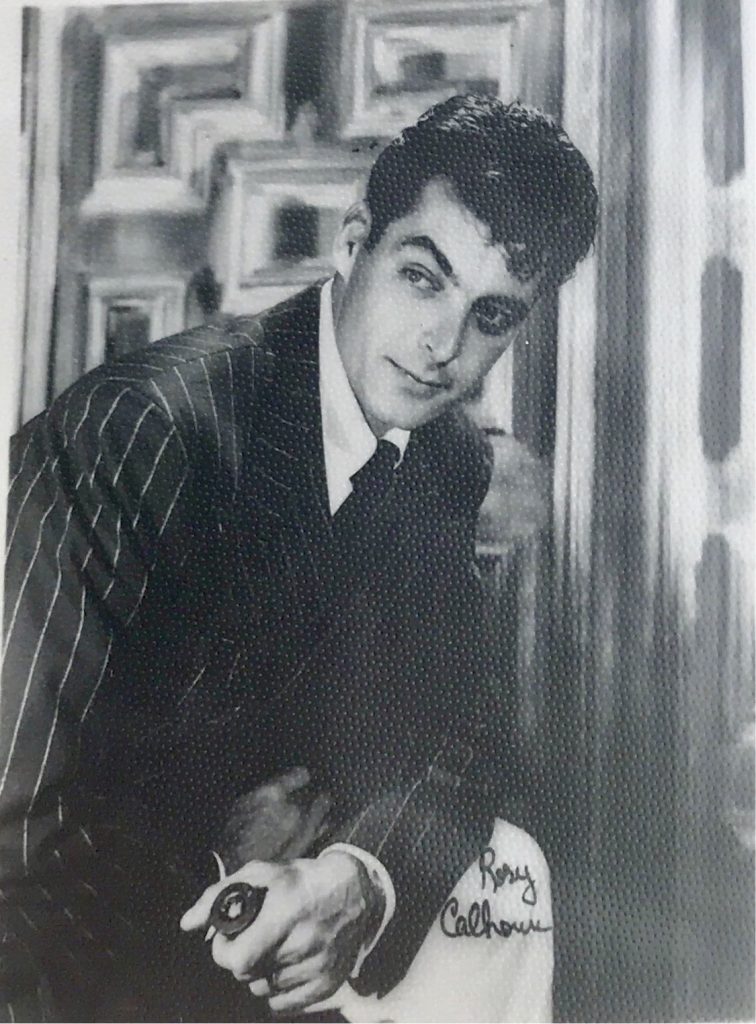
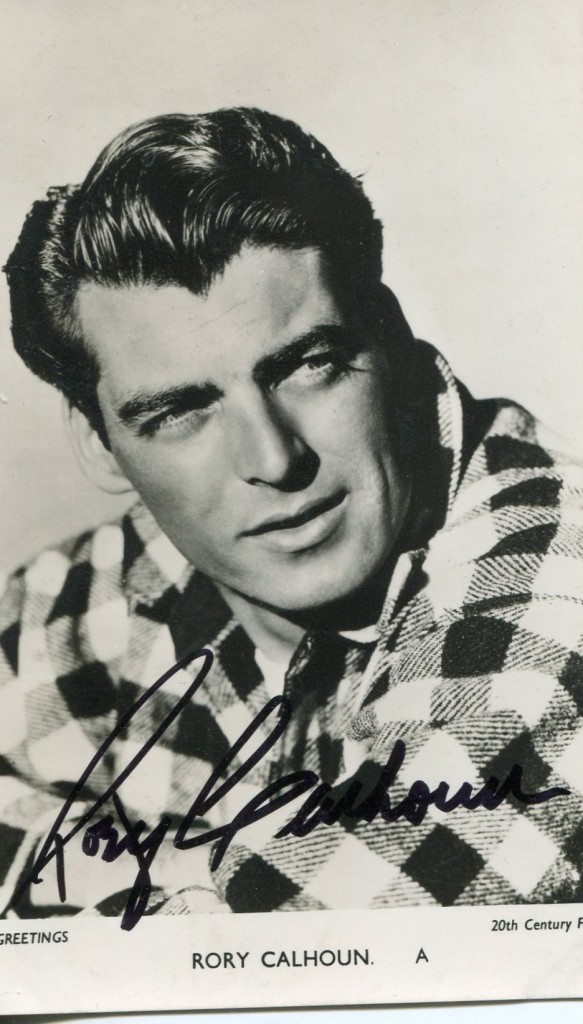

Rory Calhoun obituary in ‘The Guardian” in 1999.
Rory Calhoun has become a cult name thanks to “The Simpsons”. He was avery popular actor throughout the 1950’s especially in Westerns. He was born in Los Angeles in 1922. He was discovered by Sue Carol an agent who was also the wife of actor Alan Ladd. She managed to secure him a role in the Laurel & Hardy film “The Bullfighters” in 1945. He starred then opposite Rhonda Fleming in “Adventure Island”, “The Red House” with Julie London” and “That Hagen Girl” with Shirley Temple. His career highlights in the 1950’s included “How to Marry A Millionaire” with Betty Grable, Lauren Bacall and Marilyn Monroe in 1953, “The River of No Return” with Monroe again and Robert Mitchum and “Way of a Gaucho” with Gene Tierney. His best performance was probably with Susan hayward in “With A Song in My Heart”. His last film in 1992 was the western “Pure Country”. Rory Calhoun died in 1999 aged 76.
Rory Calhoun’s obituary in “The Independent” by Tom Vallance:A RUGGEDLY handsome actor with black hair and piercing blue eyes, Rory Calhoun was a teenage favourite and a veteran of countless low-budget westerns whose modest film career was counterpointed by a frequently scandalous and newsworthy private life. His early years of juvenile delinquency, tempestuous love affairs and controversial divorce, in which his wife named 79 co-respondents (including the famed pin-up girl Betty Grable), gained him the sort of headlines that his journeyman roles in films rarely did.

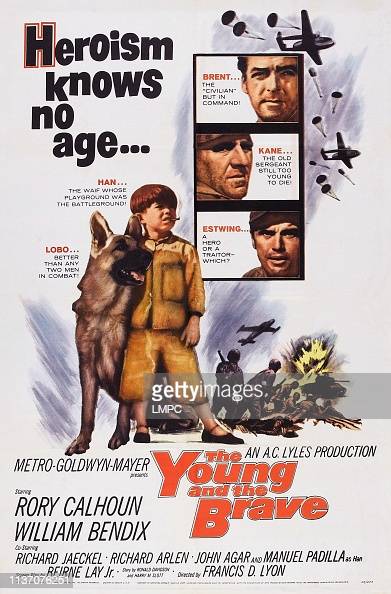

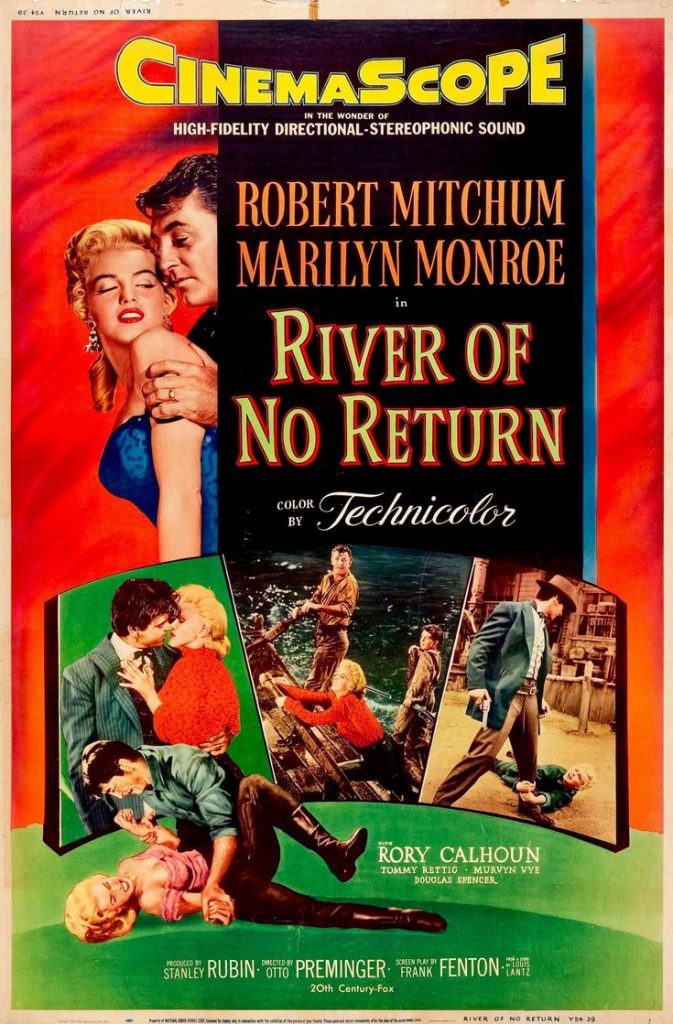
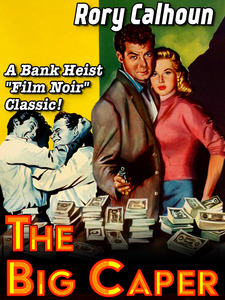






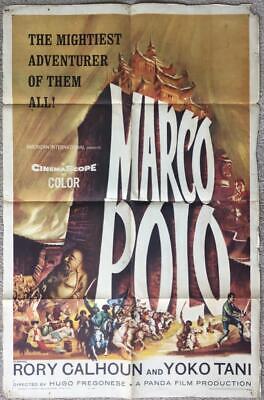


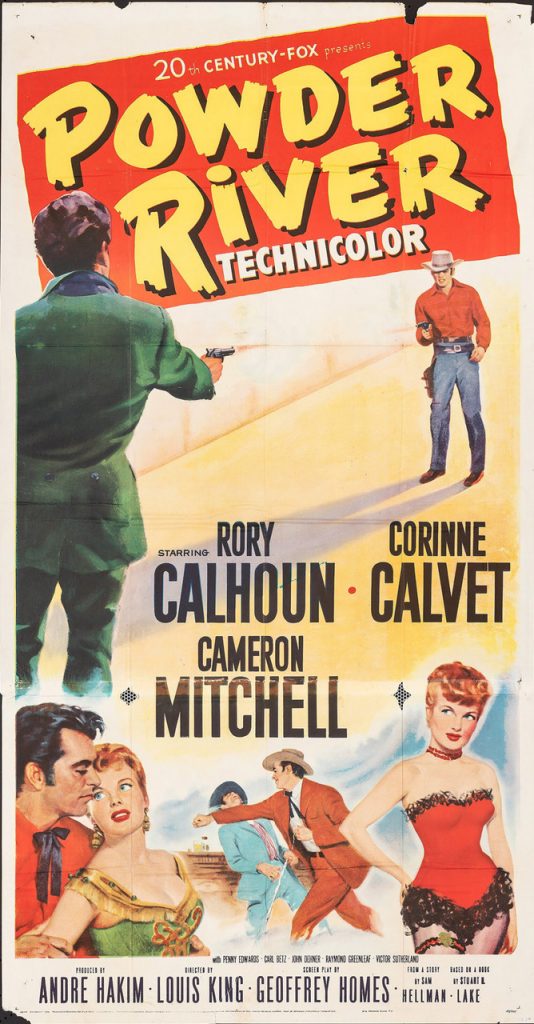

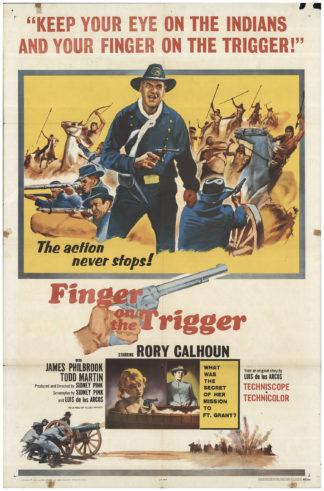
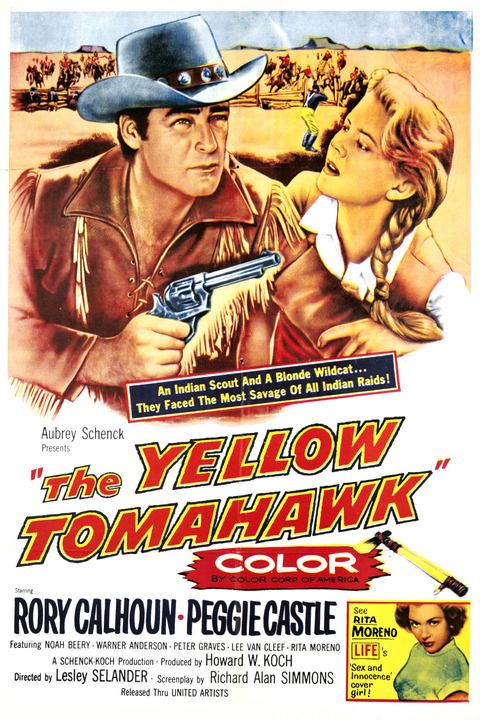
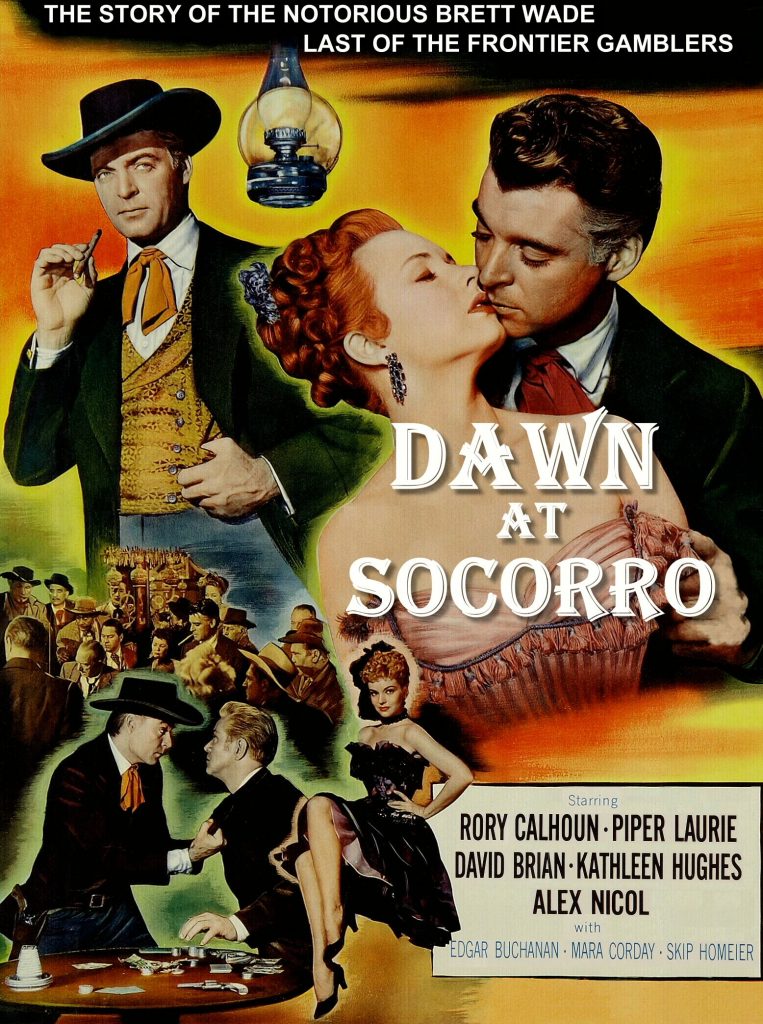

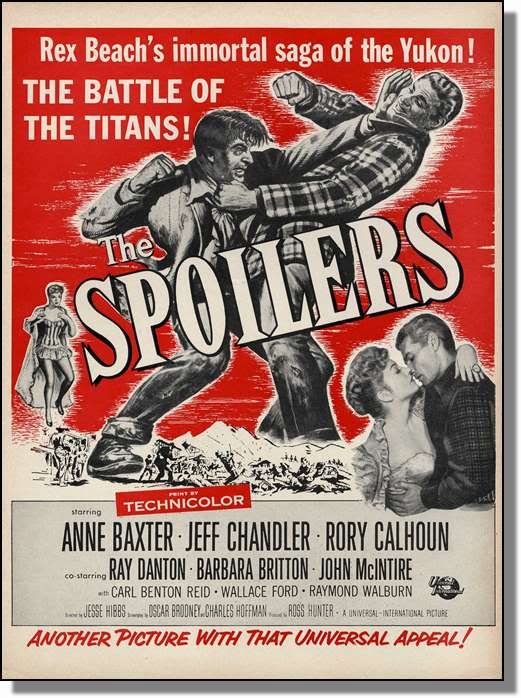
Born Francis Timothy McCown in 1922, in Los Angeles, he was raised by his mother and a step- father named Nathaniel Durgin. The family was extremely poor, and he gravitated to crime at an early age, spending much of his youth in reformatories and prisons for a series of thefts. He later credited a Catholic priest, the Rev Donald Kanally, with changing his life.
“He took me in hand after I had been sent to the Federal Reform School at El Reno, Oklahoma. He put me on the straight and narrow by teaching me to pray and respect myself, and he taught me values that I hadn’t learned as a youngster. Eventually he became a Monsignor – I hope that anyone who needs a helping hand will be as lucky as I was in having Father Kanally.”
Calhoun then worked as a lumberjack, miner and cowboy until, while riding in the Hollywood hills, he met the movie star Alan Ladd, who was impressed with the young man’s physique and invited him home to meet Mrs Ladd, the agent Sue Carol, who got him a contract with 20th Century-Fox. As Frank McCown, he made his screen debut as a soldier in Something for the Boys (1944), followed by minor roles in Sunday Dinner for a Soldier (1944) and the musical Nob Hill (1945).
When Fox dropped him, the producer David O. Selznick’s chief talent scout, Henry Willson, noted for the distinctive noms d’ecran he would give his discoveries (Guy Madison, Rock Hudson, Tab Hunter, Troy Donahue), persuaded Selznick to add the young actor to his contract list, renaming him Rory Calhoun. Though Selznick did not cast the young man in his own productions, he gave him publicity and loaned him to other producers.










Calhoun’s first big break came when he played the boxer Jim Corbett in The Great John L (1945), based on the life of the turn-of-the-century heavyweight champion John L. Sullivan and produced by Bing Crosby. The role of Corbett (whose life had earlier been depicted by Errol Flynn in Gentleman Jim, 1942) gave Calhoun the chance to display his impressive physique and athletic prowess. When MGM wanted the Selznick star Shirley Temple for their film That Hagen Girl (1947), the producer insisted they also take Calhoun for the role of Temple’s young suitor who loses her to Ronald Reagan.
The same year Calhoun made a good impression with his role in Delmer Daves’s moody, rustic film noir The Red House starring Edward G. Robinson. Calhoun was one of four young newcomers in the film, sharing some torrid love scenes with Julie London in his role as a ruthless woodman hired by Robinson to repel trespassers who might discover the secret harboured by a mysterious house in the woods.
In 1947 Calhoun started a stormy relationship with the French actress Corinne Calvet. “Our romance was spontaneous and electric,” wrote Calvet later, but she claimed that Calhoun’s volatile temper cooled their ardour – on one occasion when she had a date with the mogul Harry Cohn, she returned to find that Calhoun had wrecked her apartment. Later, after proposing marriage, he abandoned her to spend the evening with his mentor Henry Willson and, when she demanded an explanation, took a shot at her with a pistol.
Yvonne De Carlo was another actress confused by Calhoun’s relationship with Willson. Writing of a date with the actor planned by her studio, she said, “There was Rory, his agent Henry Willson, Marguerite Chapman and me. Ostensibly I was paired with Rory but it didn’t turn out that way. After photographers stopped snapping pictures, Rory and Henry stood huddled deep in conversation. Marguerite and I weren’t even tossed a dangling participle to chew on. After a while I said to Marguerite, `Can you tell me what the hell is going on?’ `Don’t look now, Yvonne,’ she kidded, `but I think I’m your date tonight.’ “
In 1948 Calhoun married the Mexican singer Lita Baron, whom he met when she was leading an orchestra at the Mocambo night-club and, according to DeCarlo, “settled down to a more stable way of life”. Having received star billing in several B movies for which he was loaned out, often with other Selznick players – Rhonda Fleming in Adventure Island (1947), Guy Madison in Massacre River (1949) – Calhoun returned to Fox with a new contract and for several years was used less as a star than as a reliable leading man to the studio’s female super-stars: Susan Hayward in I’d Climb the Highest Mountain (1951) and With a Song in My Heart (1952), Betty Grable in Meet Me after the Show (1951) and How to Marry a Millionaire (1953).
His top-billed roles were generally in minor westerns such as Powder River (1953), Four Guns to the Border (1954) and Treasure of Pancho Villa (1955), but he was more interesting when playing roguishly handsome villains – as a gunslinger hired by a stagecoach company to stop the railroad running on time in A Ticket to Tomahawk (1950), and a cowboy who abandons Marilyn Monroe and Robert Mitchum to hostile Indians and teeming rapids in River of No Return (1954).
In 1958 he formed his own company to produce Apache Territory, in which he starred, but it was not a success and later the same year he began a television series, The Texan, which ran for two seasons and cast Calhoun as a quick-on-the-draw cowboy who travelled from town to town vanquishing law- breakers, helping those in need and occasionally finding romance.
He continued to work on television and occasional minor western movies, and in 1969 became a stage producer when he persuaded his old friend and co-star Betty Grable to play the title role in a western musical, Belle Starr, planned for the West End. While the show was playing a pre-London opening in Glasgow, Lita Baron sued Calhoun for divorce, naming Grable as one of the 79 women with whom he had committed adultery. The actor responded, “Heck, she didn’t even include half of them”, though both he and Grable denied that they had been more than friends. That friendship was to end when the show flopped and Calhoun and his partner left town without paying Grable or the chorus members their last week’s salary.
The Calhouns’ acrimonious divorce became final in 1970, after which the actor did not work for some time, telling The New York Times, “I figured the more I worked, the more alimony I had to pay her. So I stayed idle.” In 1971 he married a former newspaperwoman from Australia, Susan Langley, whom he had met when she interviewed him in London, but they were divorced five years later.
His appearance becoming increasingly gaunt, Calhoun was a regular guest on television series, including Alias Smith and Jones and Petrocelli, and made some exploitation movies, including Motel Hell (1980), Angel (1984) and its sequel, Avenging Angel (1985). In his last film, Pure Country (1992), he was once more a cowboy and won praise as the best thing in a dull film, after which he retired to concentrate on his hobby as an amateur painter.
Francis Timothy McCown (Rory Calhoun), actor: born Los Angeles 8 August 1922; married 1948 Lita Baron (three daughters; marriage dissolved 1970), 1971 Susan Langley (one daughter; marriage dissolved 1976); died Burbank, California 28 April 1999.
The “Guardian” obituary can also be accessed online here.

